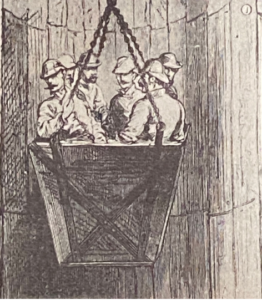Contact me



Sunglasses are a relatively modern phenomenon. They were popularized by movie stars in the 1920s. But protecting our eyes from the harmful effects of the sun is something humans have been doing for thousands of years. Oddly (or, perhaps, predictably) it wasn’t in the sun-kissed regions of the Earth where the practice first arose, but in the Arctic. The Inuit developed flattened Walrus ivory goggles with narrow slits to block reflected sunlight.

The top hat was not always the go-to headgear for the elite. It replaced the tricorn and bicorn hat in the late eighteen century. Shortly after its introduction, it became popular with all social classes. Even the common labourer could be seen sporting one.

Strictly speaking the term Suffragette should only be applied to the more militant members of the women’s suffrage movement, especially the members of the Women’s Social and Political Union (WSPU). The name was penned as a term of derision by Daily Mail writer Charles E. Hands, but Christabel Pankhurst embraced it. She pronounced the word suffra-GETs because, she said, women were determined to GET the vote.

Ever wondered why it took us so long to invent the bicycle? On the face of it, it’s not a very complicated machine: a couple of wheels mounted on a frame. But a number of technologies and developments had to come together before the bicycle became a feasible, comfortable alternative to walking. The invention of vulcanization made the bicycle’s tyres possible, while the advent of tarmac as a road surface made for a smoother ride. But arguably the key component was the smallest, most invisible part in the bike: the humble ball bearing. Until we had a way to reliably manufacture ball-bearings of regular size and roundness the bike was simply an eccentric novelty.

The Victorian railway magnate Sir Edward Watkin planned and started to build a tunnel under the English Channel in 1880. To promote his venture (and raise funds) he held lavish parties underground, in the tunnel workings. Champagne was served. Guests were transported down a 163ft shaft to the tunnel bottom in metal skips. Watkin built over of mile of tunnel before the government of the day shut the venture down on fears that invaders from Europe’s mainland could use the tunnel to storm England.


